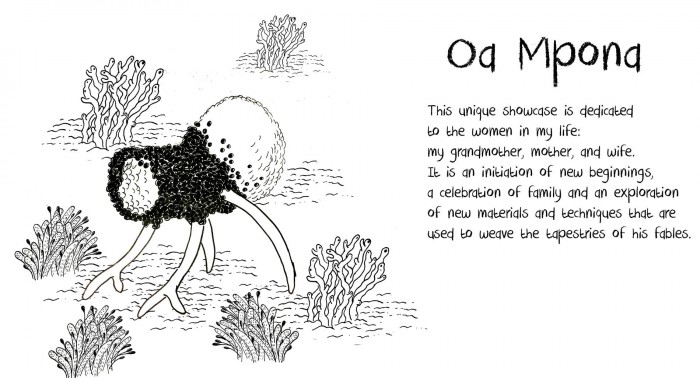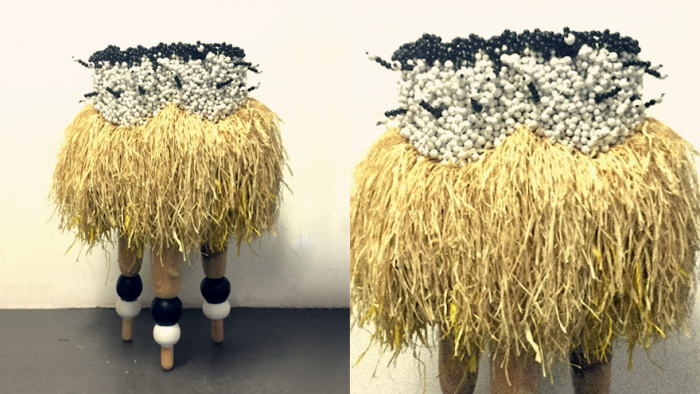I’m greeted by a massive hand-woven mat, traditional Lesotho baskets, a skateboard and a hand-carved mythical creature fighting for space on the floor.
These are the items being assembled by multidisciplinary artist and designer Atang Tshikare in preparation for his latest solo exhibition.
Tshikare has worked with various objects including sneakers, bronze sculptures, canvas and paper. His internationally recognised work has seen him being featured on CNN as well as working with big brands like Adidas. The 2012 Design Indaba Emerging Creative is also the recipient of the Southern Guild ‘Future Found Award’ which recognises top achievers in innovative local design and manufacture.
His latest show is called Oa Mpona (do you see me in Sesotho). It was a response to how society doesn’t recognise women. This is why he collaborated with women from Lesotho to bring a modern twist to traditional basket weaving. He says the idea came when he visited his wife’s (Lexie Tshikare) family in Lesotho, bought a few baskets in one of the villages and started thinking about ways they could work together.
He says that Oa Mpona is only one segment of a three-part story. He plans to complete the three-year narrative by bringing everything together and turning it into an African storybook. For Oa Mpona, Lexie wrote the mythical stories behind the different objects.
As a team, they fused African mythology and storytelling with artworks that featured mythical animals using beads and different material that does not usually form part of traditional handweaving.
“It’s good to be able to go and see what people are doing in the most rural settings, and if you can learn the old traditions of doing stuff, then we can actually preserve it as well and we’ll be taking something that is established and putting a new twist to it,” he says.
Tshikare is not only a self-taught artist but someone working independently of galleries and agents. “It’s high time for people like myself to learn how to do things themselves because you can’t always be asking, and waiting, and begging, to do whatever it is you need to do,” he says.
By representing himself he now has the freedom to communicate with other people without someone from above telling him what he can and cannot be doing.
Not having contracts and a middle man, he says, enabled him to communicate with the rural women in a culturally appropriate way. He says that with the woman weavers in Lesotho, for example, you cannot just jump on them and say ‘hey let’s work’ and it’s these subtleties that an agent could miss.
Tshikare says that it’s important to continue pushing African design to the next level.






